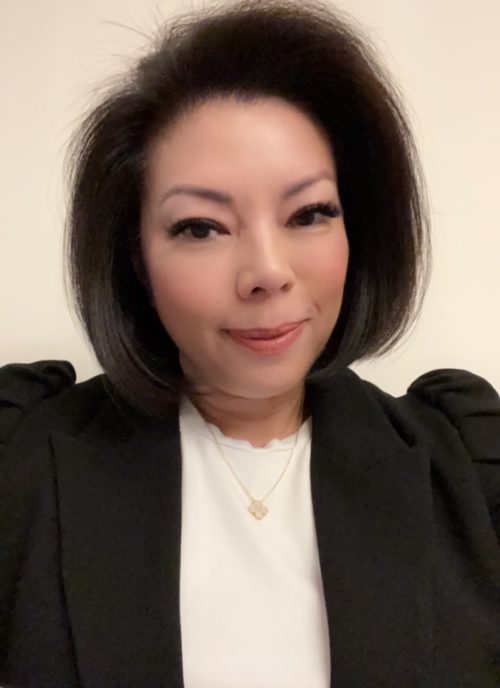Relationships are one of the most beautiful yet challenging parts of life. But what happens when you find yourself in a pattern of short-lived, toxic connections that leave you drained and doubting your worth? If you’ve experienced on-and-off relationships, manipulation, or that magnetic pull toward partners who aren’t emotionally stable, you’re far from alone. These cycles are tough, but they’re also an opportunity for growth, healing, and personal transformation.
Why Do You Attract Manipulative or Narcissistic Partners?
It’s a frustrating reality for many strong, capable people. You’ve worked hard to create stability in your life, yet you keep attracting partners who seem to thrive on chaos. Why does this happen?
1. You’re Their Anchor:
Manipulative or narcissistic individuals are often drawn to people who have solid, successful lives. Your stability is like a lighthouse in their stormy sea. You have your life together, and whether consciously or unconsciously, they see you as someone who can “fix” their own instability.
2. You’re a Giver:
If you’re empathetic and nurturing by nature, these qualities can make you a magnet for people who take more than they give. They zero in on your kindness and willingness to help, often exploiting that for their gain. This doesn’t mean there’s anything “wrong” with being a caring person, but setting strong boundaries becomes essential.
3. Familiar Patterns:
Sometimes, we gravitate toward relationships that feel familiar—even if they’re unhealthy. These dynamics could mirror unresolved issues from childhood, past relationships, or even karmic ties. Your subconscious might be trying to “fix” old wounds by recreating them, but instead of healing, it keeps you in the same loop.
The On-and-Off Again Cycle
If your relationships often play out like a never-ending rollercoaster, you’re not alone. These types of connections thrive on highs and lows, creating an addictive emotional pattern. You feel hopeful during the “on” phase and devastated during the “off,” yet something keeps pulling you back in.
This cycle can leave you questioning your worth and second-guessing the stability you’ve worked hard to build in other parts of your life. The key to breaking free is recognizing the pattern for what it is and choosing yourself over the temporary gratification these connections often offer.
Recognizing the Impact of Familiarity
The sense that toxic or chaotic partners feel “familiar” is a powerful clue. Familiarity isn’t the same as compatibility. When a relationship feels magnetic but chaotic, it’s worth pausing to evaluate the root of that connection. Are you drawn to this person because they feel comfortable, even if that comfort stems from unresolved emotional patterns?
This self-awareness is a huge step forward. Once you identify the familiarity factor, you can start to reprogram how and why you choose partners. It requires shifting from choosing what feels familiar to what feels healthy.
Steps to Break the Cycle
Breaking free from toxic relationships isn’t a one-and-done process. It’s a series of intentional choices to prioritize your well-being and growth. Here’s how to get started:
1. Get Honest About What You Want
Define the kind of relationship you truly desire. Is it stable? Supportive? Respectful? Write it down and get clear. This clarity will serve as your baseline when evaluating potential partners.
2. Set Non-Negotiable Boundaries
Boundaries aren’t about keeping people out; they’re about protecting your peace. For example:
- Don’t tolerate inconsistent communication or excuses for poor behavior.
- Limit access to your time or energy if someone proves unreliable.
Boundaries aren’t selfish. They’re an act of self-respect.
3. Recognize Red Flags Early
Pay attention to signs of manipulation, emotional unavailability, or instability early in a relationship. Trust your gut rather than making excuses for someone’s behavior.
4. Focus on Your Joy and Fulfillment
It’s easy to lose yourself in toxic relationships. To counter this, focus on you. Pour energy into the things that light you up—hobbies, career, travel, self-care. The happier and more fulfilled you are, the easier it will be to spot and reject relationships that don’t align with your life.
The Role of Financial Freedom in Personal Empowerment
Sometimes, part of the emotional pull toward unhealthy relationships is rooted in a sense of lack or stagnation in other areas of life. Financial freedom, for example, can be a powerful tool for personal empowerment. It offers the freedom to live life on your terms, rather than feeling stuck in survival mode or dependent on others for emotional or financial support.
Ask yourself this: how can you align your personal and professional efforts to create greater financial stability? Whether it’s streamlining your workload, building residual income, or exploring passion projects that boost your earning potential, increasing your financial independence can bring you closer to the life and relationships you truly want.
Breaking the Karmic Chain
Many people find themselves stuck with toxic partners in what feels like a karmic loop. These relationships hold lessons, often teaching us about self-worth, resilience, and what we’re no longer willing to accept.
Once you identify the lesson in these connections, you can move forward with clarity and renewed strength. It’s about closing the door on chaos and opening a new chapter centered on peace and fulfillment.
A Word of Encouragement
If you’re navigating these complex emotional waters, know this: you are not “bad” at relationships. What you are is someone who has loved deeply, learned hard lessons, and is ready for something more. Healthy, fulfilling love is out there, and you deserve it entirely.
The key is starting with yourself. Build the life you want, and the right person will find their way into it—not to fix or complete you, but to complement the amazing person you already are.
You’ve got this. 💖
Ultimately, breaking toxic relationship cycles requires a combination of self-awareness, boundary setting, and prioritizing your emotional and financial well-being. By focusing on what truly serves you, you’re creating space for a healthier and more fulfilling future, both personally and professionally.

Breaking Free from Toxic Relationship Cycles Psychology
Toxic relationships can feel like a never-ending cycle that’s difficult to escape, but understanding the underlying psychology can help you take the first step toward freedom. This article unpacks the complexities of toxic relationship cycles, how they form, and practical ways to break free. Along the way, we’ll explore inspiring quotes, real-life examples, and the types of personalities that often drive these dynamics.
Breaking Free from Toxic Relationship Cycles Psychology
At its core, a toxic relationship cycle often stems from a mix of personal insecurities, unhealed emotional wounds, and unhealthy attachment patterns. For example, people who experience emotional neglect or instability in childhood may unconsciously recreate those dynamics in their adult relationships simply because they feel familiar.
Psychologically, this cycle is reinforced by intermittent reinforcement, where emotional highs and lows keep you hooked. The unpredictability of affection or approval from a partner creates a craving for validation that traps people in these loops.
How to Break Free:
- Self-reflection: Examine your relationship history. What patterns or behaviors keep recurring?
- Therapy or coaching: A professional can guide you through breaking these patterns and building healthier habits.
- Education: Understanding attachment styles and psychological triggers can help you create boundaries and spot red flags earlier.
Breaking Free from Toxic Relationship Cycles PDF
Sometimes, all you need is a step-by-step guide to help you untangle the chaos. PDFs, workbooks, or online resources can provide easy-to-follow tips and exercises. These tools often include reflection prompts, boundary-setting exercises, and practical advice for building confidence.
Many resources focus on rebuilding your sense of self-worth, a crucial component for anyone leaving a toxic relationship. Having something tangible like a PDF workbook can be a constant reminder of your commitment to bettering your life.
Pro Tip: Search for free or low-cost downloadable PDFs specifically designed to support emotional healing and relationship recovery.
Breaking Toxic Cycles Quotes
Sometimes, a powerful quote is all it takes to shift your mindset. Here are a few to keep you motivated as you work toward breaking free from toxic cycles:
- “You don’t have to attend every argument you’re invited to.”
- “You deserve love that feels like calm, not chaos.”
- “The moment you stop accepting less is the moment you start receiving more.”
- “Heal so that you can hear what isn’t being said, and feel what your boundaries are protecting.”
Write these down, save them to your phone, or use them as daily affirmations to stay focused on your growth.
Toxic Cycle Relationship
A toxic cycle relationship is one marked by repeated patterns of dysfunction, such as emotional manipulation, inconsistency, or unbalanced power dynamics. These relationships often follow a predictable pattern of highs and lows, keeping both partners emotionally entrenched and unaware of how damaging the relationship has become.
For example, a partner might repeatedly apologize for toxic behavior only to repeat the same actions later. The cycle’s temporary “honeymoon” phase can create a false hope that things will change, but without sustained effort, true growth rarely happens.
Signs You’re in a Toxic Cycle Relationship:
- You feel drained or anxious after interacting with your partner.
- Apologies are frequent, but meaningful change doesn’t follow.
- Jealousy, control, or manipulation become recurring themes.
Toxic Cycle Meaning
The term “toxic cycle” refers to a repetitive pattern of unhealthy behavior in a relationship. This might include recurring arguments that never find resolution, periods of love-bombing followed by emotional withdrawal, or cycles of dependency where one partner feels they can’t leave despite the damage being done.
Understanding the meaning of a toxic cycle is essential to recognizing when you’re stuck in it. Many times, we dismiss toxic behavior as normal dynamics in a relationship, missing the opportunity to address the root problem.
Toxic Patterns in Relationships
Toxic patterns in relationships can show up in many ways and often go unnoticed for years. Here are some of the most common ones to watch out for:
- Controlling Behavior: When one partner makes all the decisions, leaving the other feeling powerless.
- Love-Bombing: Over-the-top affection quickly followed by pulling away or detachment.
- Gaslighting: Making you doubt your reality or blame yourself for their actions.
- Avoidance of Conflict: Refusing to communicate or resolve issues.
Recognizing these patterns and naming them can help you take the first step toward leaving or addressing these behaviors.
Toxic Relationship Examples
To paint a clearer picture, here are some real-life examples of toxic relationship behaviors many people experience:
- Narcissistic Partner: Someone who prioritizes their needs above yours, rarely showing genuine empathy.
- Emotionally Unavailable Partner: Someone who refuses to open up or commit, leaving you feeling disconnected.
- Manipulative Partner: A person who uses guilt or charm to control you or get their way.
What You Can Do: Learn to recognize these behaviors early on and trust your instincts. If something feels off, it probably is.
Profiles of People Displaying Toxic Behaviors
Certain personality types are often associated with toxic relationship dynamics. While each person is unique, the following profiles outline traits commonly seen in such situations.
- Narcissist: Focused on their own needs, dismissive of yours, and highly manipulative.
- Manipulator: Uses charm, guilt, or intimidation to control others.
- Emotionally Unavailable Individual: Avoids deep emotional connection due to fear or past trauma.
- Codependent Partner: Overly reliant on their partner for validation, leading to imbalanced relationships.
If any of these profiles resonate with your experiences, remember, understanding these traits isn’t about blame but awareness. The more you understand what you gravitate toward, the more empowered you become to make healthier choices.
Final Thoughts
Breaking free from toxic relationship cycles isn’t easy, but it’s one of the most empowering steps you’ll take for your personal growth. Start by understanding the psychology behind these patterns, educate yourself with helpful resources, and commit to recognizing and addressing toxic behaviors.
Remember, you’re not defined by your past relationships. With understanding, self-awareness, and the determination to prioritize your well-being, you can build the healthy, fulfilling relationships you deserve.

Your Online Personal Shopper + Stylist




